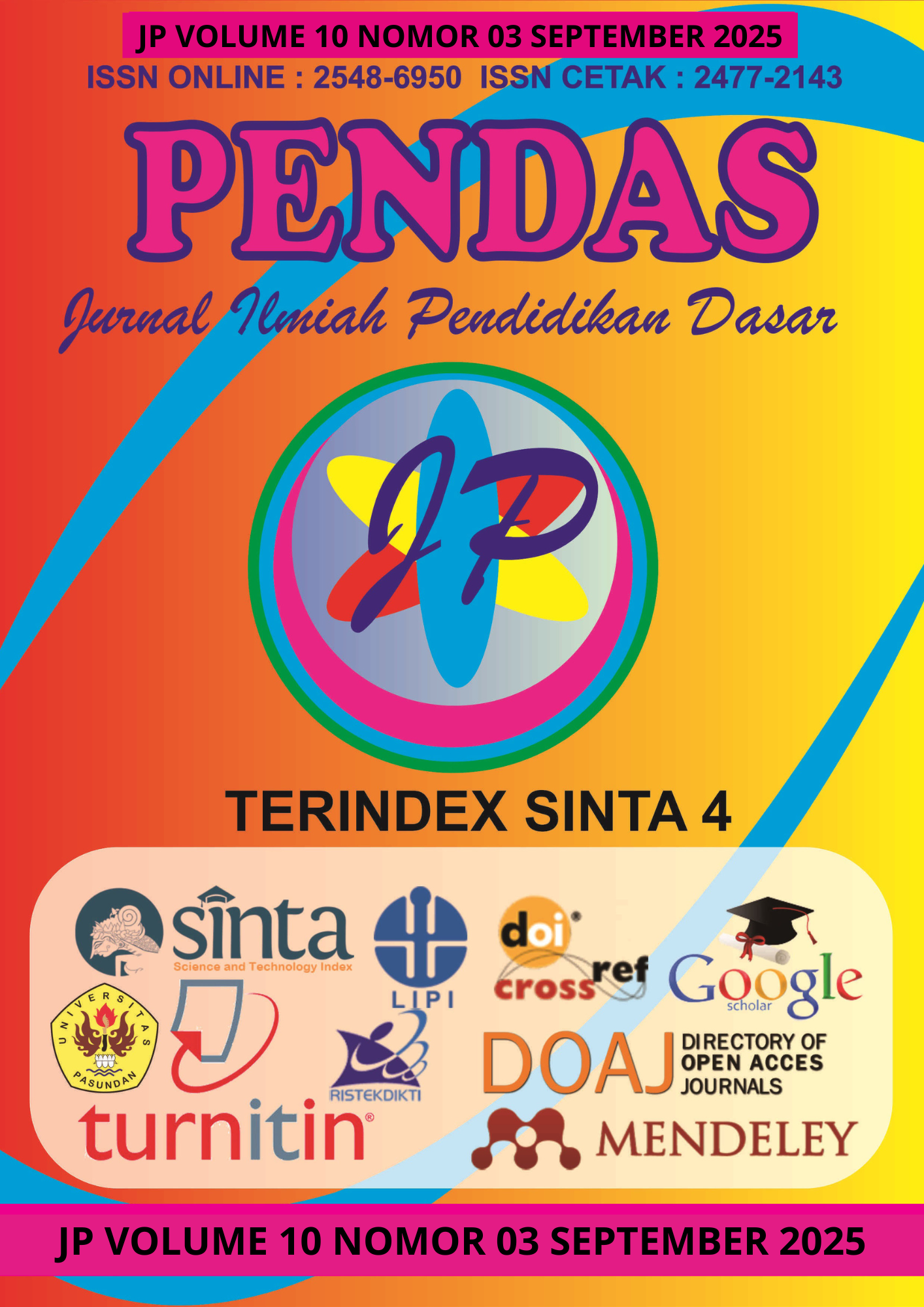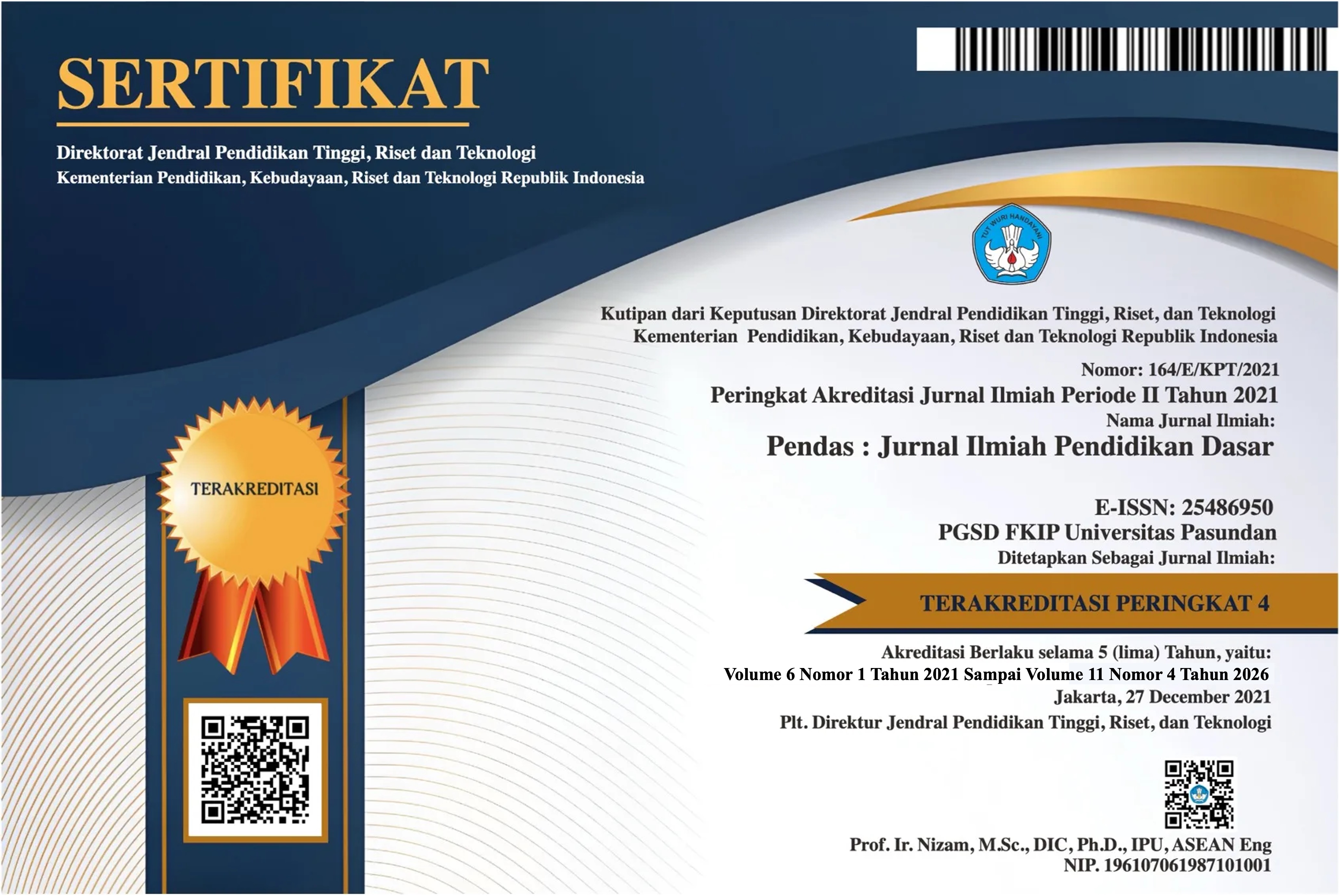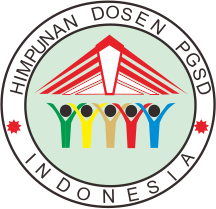KEMAMPUAN BERPIKIR KREATIF PESERTA DIDIK DALAM PEMECAHAN SOAL CERITA MATEMATIKA MATERI OPERASI HITUNG BILANGAN KELAS IV SEKOLAH DASAR
DOI:
https://doi.org/10.23969/jp.v10i03.33723Keywords:
creative thinking ability, mathematical word problems, arithmetic operations, elementary schoolAbstract
This study aims to describe the This study aims to describe the creative thinking ability of elementary school students in solving mathematical word problems on arithmetic operations in fourth grade. The research employed a qualitative approach with a case study design. The subjects were 28 fourth-grade students of SDN 70/IV Kota Jambi. Data were collected through tests, observations, and interviews, using instruments validated by experts. The analysis focused on four indicators of creative thinking: fluency, flexibility, originality, and elaboration. The results show that students’ creative thinking ability is generally low. In terms of fluency, only a small number of students were able to generate more than one solution, while most relied on a single common method. Regarding flexibility, students with high ability could switch strategies when facing difficulties, whereas others tended to stick to one method. Originality emerged as the weakest aspect, with most students providing uniform answers based on the teacher’s example, and only a few showing unique or different ideas. For elaboration, the majority of students wrote only the final answer without detailing the solution steps, while only those in the high category could explain their process systematically. These findings indicate that although a small number of students demonstrated high creative thinking ability, the majority still performed at a low level across the four indicators. This study implies the need for learning strategies that emphasize the process of creative thinking, provide space for students to explore new ideas, try alternative strategies, and practice explaining their solutions systematically.
Downloads
References
Ahyana, S., Marjuni, A., Angriani, A. D., & Rivai, I. N. A. (2023). Analisis Bentuk Kesalahan dalam Menyelesaikan Soal Cerita Matematika Tipe Higher Order Thinking Skill (Hots) Pada Peserta Didik Kelas V SDN 138 Basoken Kab. Bulukumba. Jurnal Ilmiah Pendidikan Madrasah Ibtidaiyah, 5(2), 109-124.
Ansya, Y. A. U., Alfianita, A., Syahkira, H. P., & Syahrial, S. (2024). Peran Evaluasi Pembelajaran pada Mata Pelajaran Matematika Kelas V Sekolah Dasar. Indiktika: Jurnal Inovasi Pendi dikan Matematika, 6(2), 173-184.
Assyakurrohim, D., Ikhram, D., Sirodj, R. A., & Afgani, M. W. (2022). Metode studi kasus dalam penelitian kualitatif. Jurnal Pendidikan Sains Dan Komputer, 3(01), 1-9.
Fadli, S., & Supratman, M. (2024). Analisis Keterampilan Berpikir Kreatif Matematis dalam Pemecahan Masalah Ditinjau dari Disposisi Matematika Siswa. Cendekia: Jurnal Ilmu Pengetahuan, 4(1), 57-65.
Fahma, M. A., & Purwaningrum, J. P. (2021). Teori Piaget dalam pembelajaran matematika. MUST: Journal of Mathematics Education, Science and Technology, 6(1), 31-42.
Fajar, B. M., Sidik, G. S., & Zahrah, R. F. (2024). Analisis Hambatan Belajar Siswa dalam Menyelesaikan Soal Cerita Konsep Perkalian Bilangan Cacah. Indo-MathEdu Intellectuals Journal, 5(5), 5952-5963.
Handayani, K. (2020). Analisis Faktor–Faktor Yang Mempengaruhi Kemampuan Pemecahanmasalah Soal Cerita Matematika.
Jailani, M. S. (2023). Teknik pengumpulan data dan instrumen penelitian ilmiah pendidikan pada pendekatan kualitatif dan kuantitatif. IHSAN: Jurnal Pendidikan Islam, 1(2), 1-9.
Listiani, N. (2020). Penerapan Strategi Pembelajaran Peningkatan Kemampuan Berpikir (SPPKB) terhadap kreatif matematis siswa: Penelitian eksperimen terhadap siswa kelas VIII MTs Al-Misbah (Doctoral dissertation, UIN Sunan Gunung Djati Bandung).
Nurtamam, M. E., & Maynarani, N. (2021). Proses berpikir kreatif siswa dalam menyelesaikan soal bangun datar ditinjau dari kemampuan awal siswa.
Prastyo, H. (2020). Kemampuan Matematika Siswa Indonesia Berdasarkan TIMSS. Jurnal Padegogik, 3(2), 111-117.
Qomariyah, D. N., & Subekti, H. (2021). Analisis Kemampuan Berpikir Kreatif. Pensa: e-jurnal Pendidikan Sains, 9(2), 242-246.
Suendarti, M., & Liberna, H. (2021). Analisis pemahaman konsep perbandingan trigonometri pada siswa sma. JNPM (Jurnal Nasional Pendidikan Matematika), 5(2), 326-339.
Susanto, D., & Jailani, M. S. (2023). Teknik pemeriksaan keabsahan data dalam penelitian ilmiah. QOSIM: Jurnal Pendidikan, Sosial & Humaniora, 1(1), 53-61.
Teguh, M. T. S., Wulan, T. N., & Juansah, D. E. (2023). Teknik pengumpulan data kuantitatif dan kualitatif pada metode penelitian. Pendas: Jurnal Ilmiah Pendidikan Dasar, 8(3), 5962-5974.
Thalib, M. A. (2022). Pelatihan teknik pengumpulan data dalam metode kualitatif untuk riset akuntansi budaya. Seandanan: Jurnal Pengabdian Pada Masyarakat, 2(1), 44-50.
Tri, A. (2024). Pengaruh Pendekatan Problem Solving Terhadap Kemampuan Pemecahan Masalah Matematika Peserta Didik Kelas IV di MIN 10 Bandar Lampung (Doctoral dissertation, UIN RADEN INTAN LAMPUNG).
Unaenah, E., Syariah, E. N., Mahromiyati, M., Nurkamilah, S., Novyanti, A., & Nupus, F. S. (2020). Analisis pemahaman siswa dalam operasi hitung penjumlahan bilangan bulat menggunakan garis bilangan. NUSANTARA, 2(2), 296-310.
Yani, E. P., & Matondang, K. (2024). Penerapan Media Pembelajaran Matematika Pada Siswa SMA. OMEGA: Jurnal Keilmuan Pendidikan Matematika, 3(2), 65-72.
Downloads
Published
Issue
Section
License
Copyright (c) 2025 Pendas : Jurnal Ilmiah Pendidikan Dasar

This work is licensed under a Creative Commons Attribution 4.0 International License.



















